What’s on my skin? 8 common bumps, lumps, and growths
From acne to hives, get the lowdown on your skin issues.
Updated on May 9, 2024
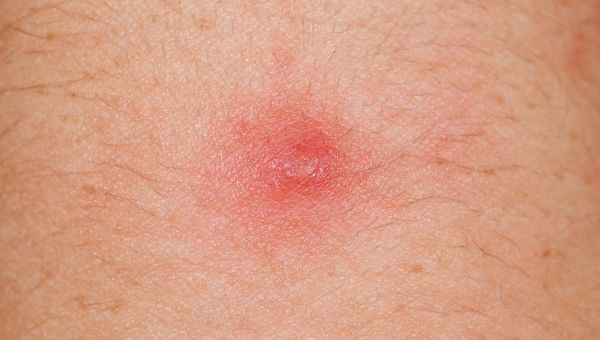
When a bump or rash pops up on your skin, a lot of questions probably go through your mind. What happened here? Is it going to leave a scar? How can I make this go away?
With that in mind, here are some of the most common skin growths, what causes them, and how they’re treated.
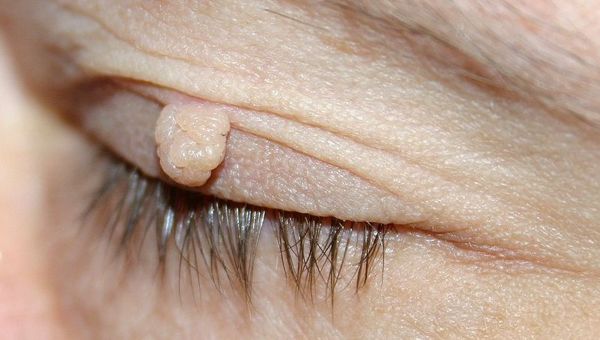
Skin tags
What it is: Skin tags are little raised bumps that form on short stalks or stems. “They are essentially just small projections or growths of excess skin,” says Vinod Nambudiri, MD, a dermatologist and internist in Boston.
Skin tags are commonly found in areas where there is skin-on-skin friction, like the neck, armpit, groin, and sometimes on the side of the abdomen. Pregnancy, growing older, diabetes, and obesity can all increase your risk.
Prevention and treatment: Unless your skin tags are painful or you’re uncomfortable with the way they look, there is usually no reason to treat them. If they are bothering you, your healthcare provider may freeze, cut, or burn them off.
Image credit: Oliver Riesen
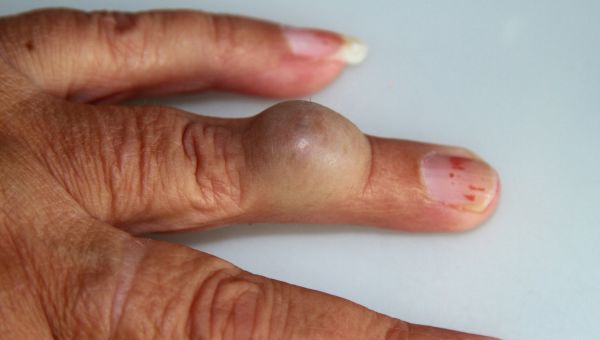
Epidermal cysts
What it is: Epidermal cysts, also called epidermoid cysts, are the most common type of skin cyst. They look like round bumps and typically don’t cause issues.
The surface of your skin is protected by a layer of cells your body consistently sheds. In fact, you shed 30,000 to 40,000 old skin cells in a single day! Sometimes these layers grow under your skin rather than shedding, forming a cyst.
Prevention and treatment: Since these cysts don’t usually become problematic, you probably won’t need to treat them. However, if your cyst is growing quickly, hurts, or has ruptured, see your healthcare provider so they can check for infection. If the cyst is infected, it may need to be drained or removed or you may need to take antibiotics.
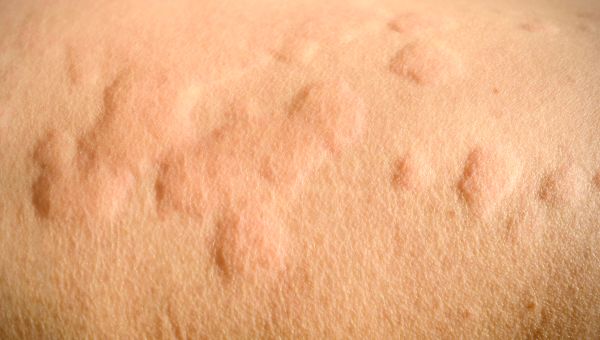
Hives
What they are: Hives are itchy, discolored welts that form individually or in clusters. Individual hives normally go away within 24 hours, but new hives can keep popping up. All hives usually clear within six weeks.
Hives are caused by allergic reactions to things like bug bites, foods, sun, or fragrances. Some of the most common triggers are eggs, peanuts, shellfish, pollen, latex, allergy shots, stress, medications, infections, and insect bites and stings.
Prevention and treatment: If you notice that you break out after eating certain foods, steer clear of them. If you can’t figure out what’s causing your hives or your hives last more than six weeks, your dermatologist may suggest allergy tests, blood tests, or a skin biopsy. Hives with other symptoms like shortness of breath or facial swelling are signs of a more serious allergic reaction.
When you do break out, over-the-counter antihistamines can help reduce swelling and itching for mild or moderate cases. Prescription antihistamines, corticosteroids, and other anti-inflammatory medications can help relieve symptoms of chronic hives, too.
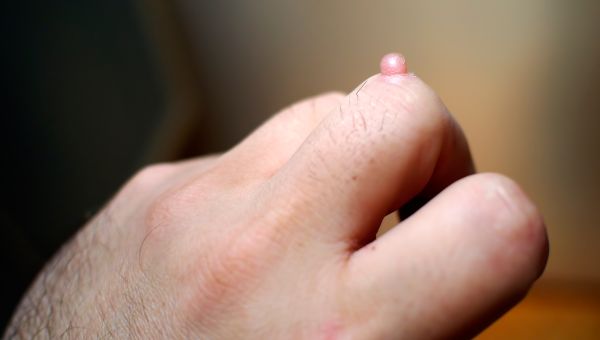
Warts
What it is: “Warts, or small raised growths, commonly form on the hands, feet, or groin,” says Dr. Nambudiri. Some warts may not give you any problems, while others may itch or become uncomfortable. Warts can bleed or become sensitive when touched or bumped.
The growths are caused by a type of virus, called human papillomavirus (HPV), that infects the top layer of the skin. Warts are contagious and can pass from person to person through sex, touch, and even exposure to things like towels and linens.
Prevention and treatment: Sometimes, though it may take years, warts go away on their own. But as you get older, your warts may take longer to clear up, or they may become permanent. Depending on the type of wart you have, your dermatologist may be able to cut it out or treat it with topical medications like cantharidin or salicylic acid. Cryotherapy (freezing), laser treatment, topical immunotherapy, and electrosurgery are other options.
The HPV vaccine can help prevent genital warts, as well as most cervical cancers and some cancers of the anus, vulva, vagina, and back of the throat. The Centers for Disease Control and Prevention recommends vaccination at age 11 or 12 years old, though it can begin as early as age 9. People ages 13 through 26 can also receive it if they haven’t done so already.
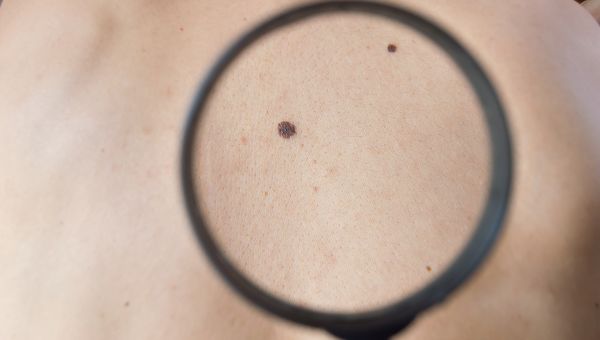
Common moles
What it is: Most adults who have light skin have between 10 and 40 common moles—rounded or oval-shaped growths that form when pigmented cells grow in a cluster. If you have 50 or more of them, you have a greater chance of developing melanoma, the most serious type of skin cancer, says Nambudiri. While common moles aren’t cancerous, if a new mole pops up or you notice any of the following changes, see your dermatologist so they can check for melanoma:
- Changes in color
- Uneven change in size (bigger or smaller)
- Skin surface is dry or scaly
- Itching
- Oozing
Sun exposure can lead to mole development, melanoma, and other skin cancers. A family history of melanoma, a fair skin tone, and medications that make your skin more susceptible to sun damage can also raise your risk.
Prevention and treatment: Protect your skin from ultraviolet (UV) radiation by wearing a daily sunscreen with broad-spectrum coverage, which defends against both UVA and UVB rays. And when you head outdoors, cover up with sunglasses, wear a wide-brim hat, and opt for long pants. If you have a lot of moles, keep an eye on them and let your doctor know if any are changing.
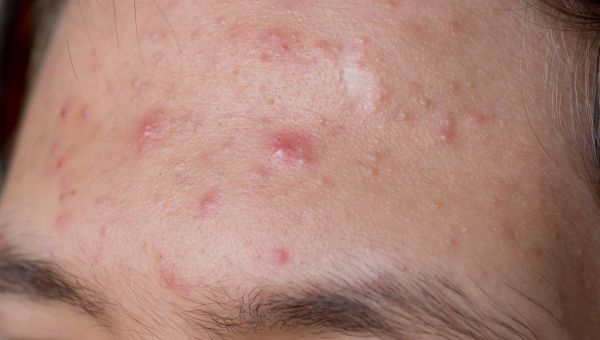
Acne
What it is: The tiny holes on your face are called pores. They usually house oils, dead skin cells, and bacteria. But topical products, sweat, irritation, and hormone changes during life stages like pregnancy and puberty may clog those pores, causing inflammation and blemishes called acne.
Acne literally means “skin eruption,” and breakouts and pimples come in different forms:
- Blackheads are blocked pores that remain open.
- Whiteheads are blocked pores that have closed over.
- Pustules are yellowish, pus-filled bumps.
If your blocked pores become irritated, your pimples may grow, forming nodules (if they’re hard) or cysts (if they're softer and pus-filled).
Prevention and treatment: Over-the-counter treatments with topical retinoids (tretinoin) or topical antibacterial agents (benzoyl peroxide) may work. If you have frequent breakouts, a dermatologist can recommend topical treatments, oral medications, chemical peels, or light therapies.

Skin boils
What it is: Sometimes, a skin infection around a hair follicle or oil gland will create a discolored, painful lump called a boil.
Boils, usually caused by the bacteria Staphylococcus aureus, tend to pop up in areas where you sweat, like the face, neck, armpits, and thighs. You may be at an increased risk if you have a bug bite or scrape with an opening; this allows bacteria to get in the skin. A weakened immune system, diabetes, acne, and eczema can also raise your chances.
Prevention and treatment: You can actually treat small boils at home. Apply a warm washcloth on the area for 10 to 15 minutes, three to four times a day until you notice the pus releases and the boil has healed. It’s important you don’t squeeze or poke at your boil, as doing so can spread infection. The spot should clear up within three weeks, but if gets worse, see a dermatologist. If you have larger boils or multiple boils, you’ll need to see a healthcare provider.
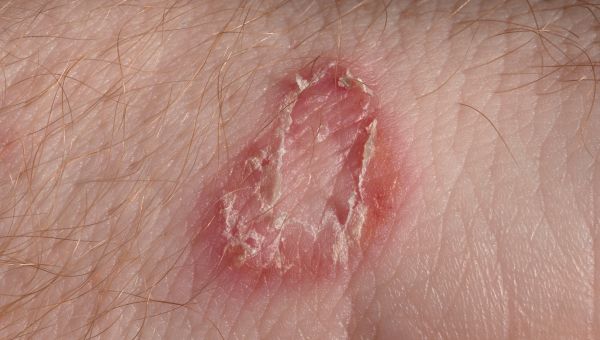
Ringworm
What it is: Perhaps surprisingly, ringworm is not caused by worms, but a fungus. It appears most commonly on the feet, hands, and scalp in the form of itchy, scaly, discolored patches. Sometimes, the rash can grow larger and form circles or rings.
Chafing against clothes, participating in contact sports like wrestling and football, and hanging out in hot, humid weather can all raise your risk of contracting ringworm. It’s very contagious, so sharing towels or combs with someone who has infection can raise your risk, too.
Prevention and treatment: To prevent ringworm, be sure to maintain good hygiene: Always shower after exercise, refrain from sharing personal items, and change your clothing every day to ensure it’s dry and clean.
If you think you have ringworm, topical or oral anti-fungal medications will clear up the infection within a few days.

MedlinePlus. Cutaneous skin tag. Reviewed July 19, 2021.
Cleveland Clinic. Skin Tag (Acrochordons). Reviewed May 1, 2021.
National Health Service (UK). Skin tags. Reviewed November 20, 2019.
Medscape. Epidermal Inclusion Cyst. Updated September 17, 2020.
Mayo Clinic. Epidermoid Cysts. April 7, 2020.
Cleveland Clinic. Skin. Reviewed October 13, 2021.
American Academy of Dermatology Association. Hives: Diagnosis and Treatment. Updated September 28, 2021.
American Academy of Dermatology Association. Hives: Overview. Updated September 28, 2021.
Cleveland Clinic. Hives. Reviewed October 14, 2022.
Familydoctor.org (AAFP). Warts. Updated August 11, 2021.
MedlinePlus. Warts. Updated April 4, 2016.
American Academy of Dermatology Association. Warts: Diagnosis and Treatment. Updated January 26, 2023.
Centers for Disease Control and Prevention. Human Papillomavirus (HPV): HPV Vaccine Information for Young Women. Reviewed April 18, 2022.
American Academy of Dermatology Association. Moles: Who Gets and Types. Accessed March 30, 2023.
National Cancer Institute. Common Moles, Dysplastic Nevi, and Risk of Melanoma. Reviewed November 17, 2022.
Mayo Clinic. Moles. February 18, 2022.
American Academy of Dermatology Association. Acne: Who Gets and Causes. Accessed March 30, 2023.
American Academy of Dermatology Association. Acne: Tips for Managing. Updated November 16, 22.
American Academy of Dermatology Association. How to Treat Different Types of Acne. Accessed March 30, 2023.
Cleveland Clinic. Pimples. Reviewed March 4, 2022.
Mayo Clinic. Boils and Carbuncles. September 18, 2021.
American Academy of Dermatology Association. How to Treat Boils and Styes. Accessed March 30, 2023.
American Academy of Dermatology Association. Ringworm: Diagnosis and Treatment. Accessed March 30, 2023.
More On


video

article

slideshow


video


video
